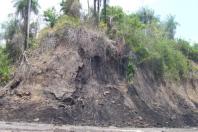Shell to Take 61% Stake in China Oil Shale Venture
Shell to Take 61% Stake in China Oil Shale Venture
September 1, 2005
Royal Dutch Shell is taking a 61% stake in a new joint venture firm that will invest up to US$150 million in exploring and developing oil shale deposits in northeastern China.
The new joint venture company, the Jilin Shell Oil Shale Development Company Limited (Jilin Shell), will be 61% owned by Shell and 39% by Jilin Guangzheng Mineral Development Company Limited. The agreement is subject to approval by the Chinese Government.
Under the agreement, the joint venture will carry out an exploration program to test the presence of commercially viable oil shale deposits and will then conduct a field demonstration using Shell’s oil shale In-Situ Conversion Process (ICP), which is currently in a pilot stage.
The long-term objective of the joint venture is to develop the oil shale resources for the commercial production of high quality transportation fuels and other energy products. Commercial developments would be at least 10 years away.
China started working with oil shale development in the 1920s, but most projects were shut down in the 1990s due to the low cost of oil. Estimates of global oil shale resources vary wildly, but China is thought to have one of the world’s larger resources. The US has by far, in all estimates, the largest oil shale reserves in the world (some 60%–70%).
Oil shale is a fine-grained sedimentary rock containing kerogen—a solid organic precursor to oil and gas—from which oil and gas can be obtained through the application of heat. There are two basic approaches to processing oil shale: mining the rock and heating it in a surface retort, and heating the rock in the ground, to then pump up the resulting oil.
In-situ processing is a developing technology, offering lower financial and environmental costs than the traditional mining and retorting methods. That said, there are still many uncertainties in both of those areas: the financial and the environmental.
Shell has been working on its In-Situ Conversion Process (ICP) for more than two decades—ever since the collapse of the first run at oil shale in the 1980s.
(The oil crises of the 1970s led Congress under President Carter to create the Synthetic Fuels Corp. in 1980 to find new, domestic sources of crude. The oil shale boom collapsed after oil prices bottomed out in the 1980s, leaving many new towns in Colorado in the lurch.)
Under the in-situ process, Shell drills holes into the resource, inserts electric resistance heaters, and heats the subsurface to around 343º C (650º F) over a 3- to 4-year period. During this time, very dense oil and gas is expelled from the kerogen and undergoes a series of changes, including the shearing of lighter components from the dense carbon compounds, the concentration of available hydrogen into these lighter compounds, and the changing of phase of those lighter more hydrogen rich compounds from liquid to gas.
These gaseous lighter fractions are now far more mobile and can move in the subsurface through existing or induced fractures to conventional producing wells from which they are brought to the surface.
Shell says that ICP results in the production of about 65%–70% of the original carbon in place in the subsurface. The carbon that does remain in the sub-surface resembles a char, is extremely hydrogen deficient and if brought to the surface would require extensive energy intensive upgrading and saturation with hydrogen.
The ICP process is clearly energy intensive as its driving force is the injection of heat into the subsurface. However, the energy efficiency compares favorably with many conventional heavy oil fields that for decades have used steam injection to help coax more oil out of the reservoir, according to Shell.
The produced mix is different from traditional crude oils. It is much lighter and contains almost no heavy ends. Quality can be controlled by changing the heating time, temperature and pressure in the sub-surface.
The production mix generally seen from Shell’s Colorado oil shale pilot is about two thirds liquids and one-third natural gas and gas liquids such as propane and butane. On the liquid product side, the typical split encountered is about 30% each of a gasoline precursor called naphtha, jet fuel and diesel with the remaining 10% of the barrel being slightly heavier. These fractions can be refined into finished products with significantly reduced processing when compared with traditional crude oils.
To keep groundwater away from the process (which would affect the heating), and to keep byproducts of the process away from the groundwater flow, Shell proposes to freeze the groundwater to create a subsurface ice barrier. (The creation of subsurface ice barriers to prevent water flow is a mining technique.)
Shell tests show that a freeze wall does prevent the loss of contaminants from the heated zone.
RAND Corporation has just released a new study suggesting moving oil shale development forward in the US, but without from major government investments until the private sector is prepared to commit technical, management and financial resources.
The study, titled Oil Shale Development in the United States: Prospects and Policy Issues, indicates that oil production based on older oil shale mining and retorting technologies would not be profitable unless crude oil prices consistently stay above at least $70 to $95 per barrel.
Shell, on the other hand, has estimated that ICP could be competitive with oil prices at some $30 per barrel.
ICP offers a lower environmental impact than the more invasive mining and surface retorting operations. Even so, there are significant environmental challenges for shale oil production to overcome in addition to developing a commercially viable processing technology. To name just a few:
-
Land use. In the US, regardless of the technology, a portion of the land over the Green River Formation (where the bulk of US oil shale lies) would need to be withdrawn from current uses. (This might make the debate over drilling in ANWR seem tepid in comparison.)
-
Infrastructure. Roads, power supply and distribution systems, pipelines, water storage and supply facilities, construction staging areas, hazardous materials handling facilities, and buildings.
-
Air quality (criteria pollutants) and greenhouse gas emissions.
-
Water quality. For mining and surface retorting, potential sources of water pollution include mine drainage; point-source discharges from surface operations associated with solids handling, retorting, upgrading, and plant utilities; and leachate from spent (i.e., retorted) oil shale. For in-situ processing, there is little understanding of the long-term impact on groundwater flow and quality. The Shell freezing study was only a very small initial step in that direction.
-
Water consumption. Estimated water requirements for mining and retorting range from 2.1 to 5.2 barrels of water per barrel of shale oil product. In-situ processing eliminates or reduces a number of these water requirements, but still will require considerable use (oil and natural gas extraction, post-extraction cooling, products upgrading and refining, environmental control systems, and power production).
On the other side of the ledger is the estimated 800 billion barrels (midpoint estimate) of recoverable oil from oil shale in the US—and the energy and fuel needs of China.
http://www.greencarcongress.com/2005/09/shell_to_take_6.html


